MARIANI’SVirtual
Gourmet
July
29, 2012
NEWSLETTER
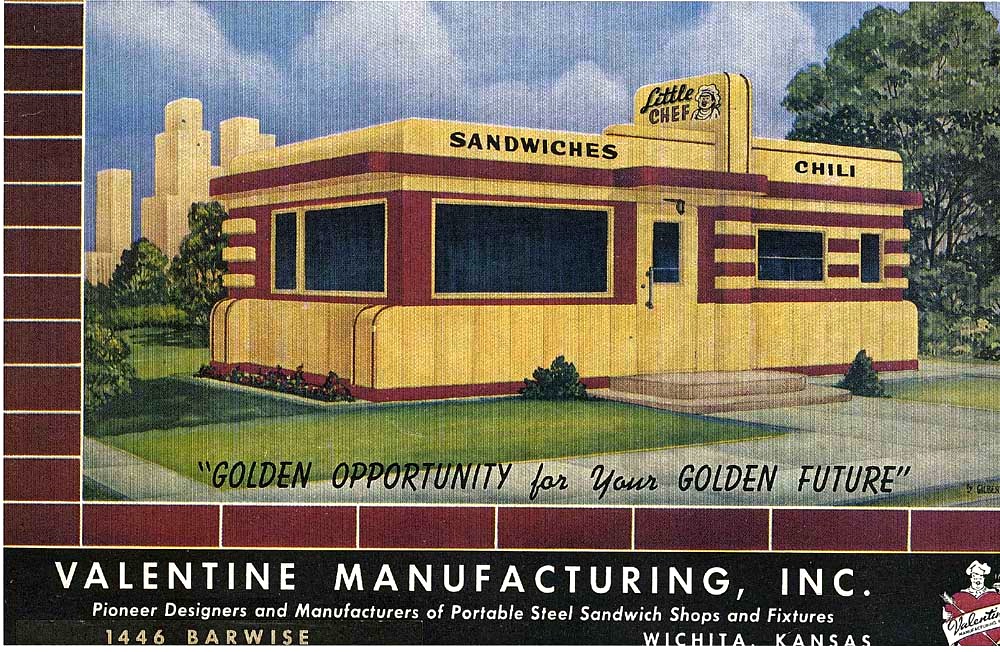
❖❖❖
NEW YORK CORNER
The
Sweetest Lobster in the Sea
Comes from a Tiny
Nova Scotia Town
by Mort
Hochstein
NOTES FROM THE WINE CELLAR
NOT-SO-FIZZY LAMBRUSCO DEMANDS RESPECT
by John Mariani
❖❖❖
A DINER'S MODERN DICTIONARY
by John
Mariani
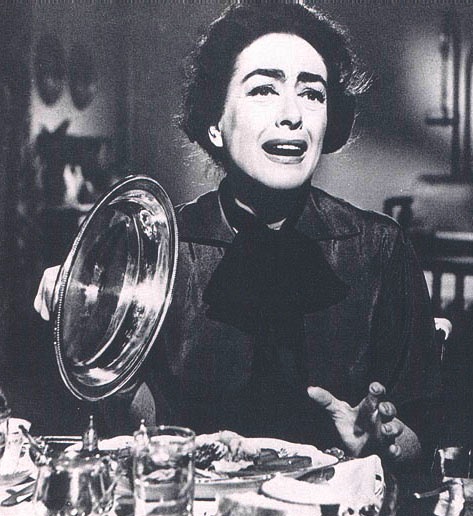 Taste: Flavor;
Also, the ideas of a culture in regard to what is
harmonious or beautiful. Among so-called “hipster
foodies” the latter is considered a wholly
antiquated concept.
Taste: Flavor;
Also, the ideas of a culture in regard to what is
harmonious or beautiful. Among so-called “hipster
foodies” the latter is considered a wholly
antiquated concept.
Contrived: Obviously planned
or forced, artificial, strained. See “Modernist
Cuisine.”
Modernist Cuisine. Also
“molecular cuisine.”
The contrivance of cooks for whom good taste
is secondary to mere sensationalism. Also, the
deliberate manipulation of an ingredient to be
unrecognizable as food. 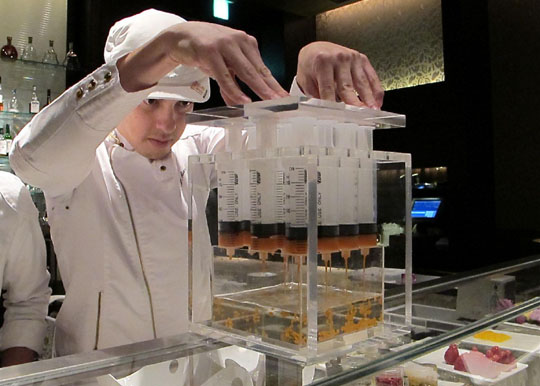
Manners: Polite standards,
still confusing for or ignored by many American
diners and therefore no longer expected at most
restaurants.
Service: Duties performed by
a waiter or restaurant employee to make a guest feel
welcome and happy.
In current usage, it often means the least
amount of attention and interaction between guests
and waiters.
 Tip: A payment to a
restaurant employee for work his employer refuses to
pay for. The colloquialism “greasing the palm” means
to pay the maître d’ or manager to insure he
will suck up to a guest, usually proffered by people
with a low sense of self-esteem or lack of manners.
Tip: A payment to a
restaurant employee for work his employer refuses to
pay for. The colloquialism “greasing the palm” means
to pay the maître d’ or manager to insure he
will suck up to a guest, usually proffered by people
with a low sense of self-esteem or lack of manners.
Reservation: A table at a
restaurant requested in advance and held for the
guest for at least fifteen minutes. Although usually
honored by most restaurants, they are commonly
laughed at by managers of NYC steakhouses or not
taken at all at the newest hot spots. 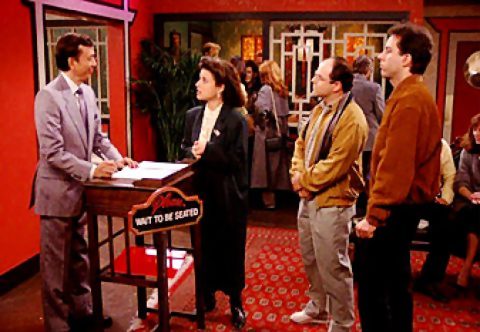
Background music: Soft,
soothing music to provide mood to a restaurant
without intruding on a room’s natural conviviality.
Currently, this has changed to the playing of “house
music” so deafeningly loud that only the bass and
drums can be heard.
Dress code: Once a
reasonable request that guests dress appropriate to
the style of restaurant, i.e., fine
dining, eatery, diner; now considered an insult by
those 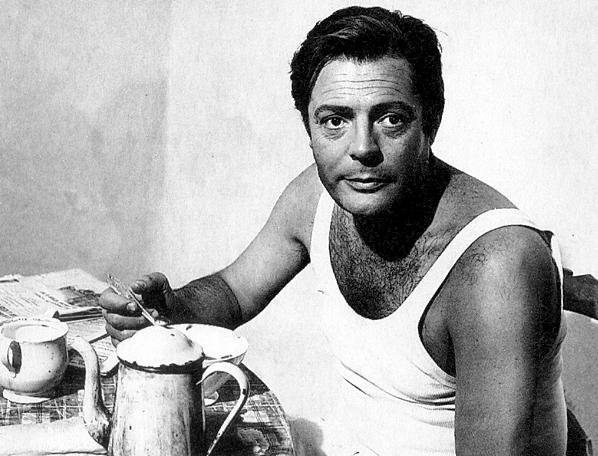 for whom
t-shirts, jeans and flip flops are good enough for
any public room anywhere, often expressed as “Nice
clothes don’t make the food taste any better.”
for whom
t-shirts, jeans and flip flops are good enough for
any public room anywhere, often expressed as “Nice
clothes don’t make the food taste any better.”
Tablecloths: A
thousand-year-old amenity used to provide a
sanitary, sound-absorbing, light reflecting soft
surfaces, now considered wholly unnecessary and
antithetical to a “design statement,” i.e., a
cheap restaurateur trying to cut out linen costs.
Host/hostess/reservationist:
A person at the front desk whose job is to make
guests feel welcome, acknowledge their reservations,
and show them to their table. Often, however, this
job is now left to a highly attractive young woman
whose only job is to recognize celebrities or
restaurant critics and swoon accordingly. 
Tasting Menu: An endless
sequence of chef’s choices designed to overwhelm
your judgment and to get you to order more wine.
“A” list: A list kept by the
maître d’ for regulars, celebrities, Russian
billionaires, critics, and palm greasers. “B” list
is everyone else.
Wine pairings: A sommelier’s
matching of appropriate wines to a tasting menu;
also, a way of using up the wines from last night’s
tasting menu.
Gouging: A way restaurants
extort money from a guest without his knowing it, e.g.,
charging extra for a cocktail served straight up
rather than on the rocks, or by promoting bottled
water.
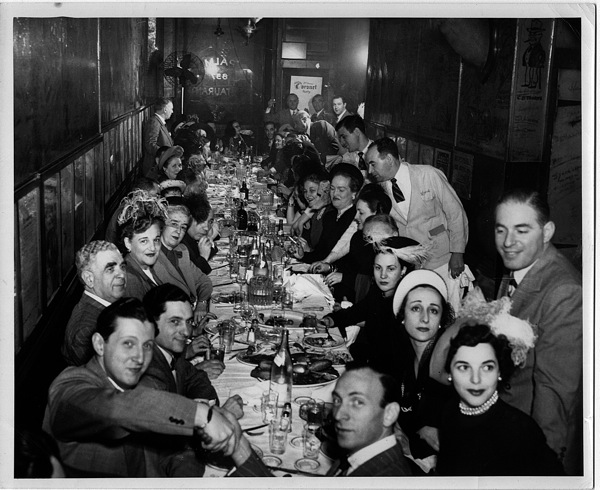 Seating plan: A way
to make sure every waiter gets an efficient workload
for the evening. Also, a way for maître d’s to
put people in their place.
Seating plan: A way
to make sure every waiter gets an efficient workload
for the evening. Also, a way for maître d’s to
put people in their place.
Siberia: A mythical space in
restaurants where anyone not on the “A” list
believes he is seated.
Supplements: Extra charges
above a fixed price menu for certain items,
justified for caviar alone, but not for smoked
salmon, foie gras, lamb, risotto or soufflés.
Small plate menu: A menu
designed to encourage customers to order too many
dishes that add up to an unexpected large bill. 
Locavore: A person or cook
who eats only food grown or produced within a
certain mileage from the dinner table. Exemptions
commonly include wine, all seasonal fruits and
vegetables, meat and fish.
Bread: Except in Asian
restaurants, the service of bread is a worldwide
amenity (once incurring a cover charge), now brought
to the table only after guests have ordered their
meal, 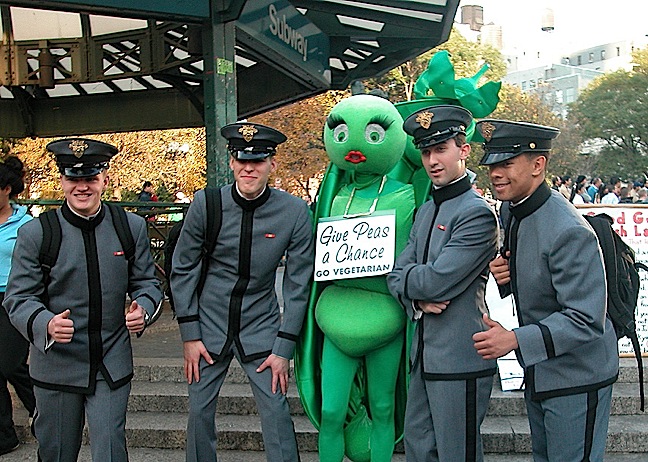 in case they fill up on bread
and cut out an appetizer or dessert.
in case they fill up on bread
and cut out an appetizer or dessert.
Vegetarians: People who for ethical,
religious, dietetic, or philosophical reasons do not
eat meat but who do not usually make a fuss of it.
Vegans: People who for
ethical, religious, dietetic, or philosophical
reasons do not eat any food that once had a face and
flaunt their fanaticism in everyone else’s face.
❖❖❖
NEW YORK CORNER
The
Sweetest Lobster in the Sea
Comes from a Tiny Nova Scotia Town
by Mort Hochstein
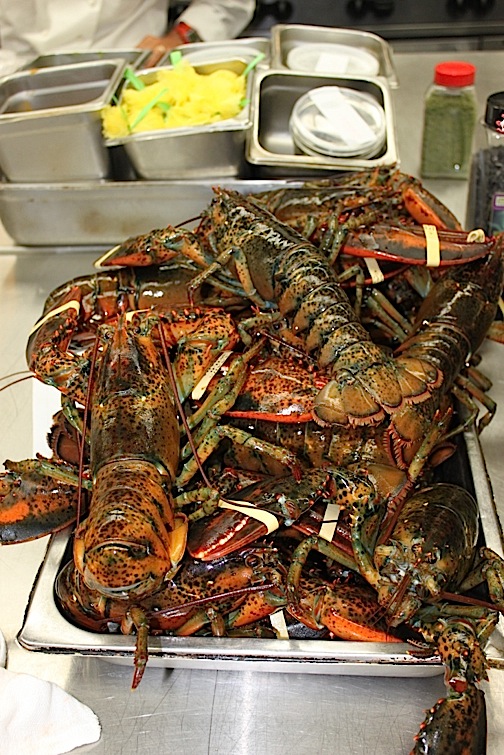 It
pays to have connections in the hospitality
business, particularly when it comes to acquiring
specialty food items that make the difference
between ordinary and great. USDA Prime beef, for
example, is in short supply, and allotted primarily
to the finer steakhouses, while consumers are
limited to lesser cuts in the supermarkets.
It
pays to have connections in the hospitality
business, particularly when it comes to acquiring
specialty food items that make the difference
between ordinary and great. USDA Prime beef, for
example, is in short supply, and allotted primarily
to the finer steakhouses, while consumers are
limited to lesser cuts in the supermarkets.
And
then there are lobsters, notably the Fourchu
lobster, available for only a few months of the year
and primarily at restaurants in NYC. When Parke Ulrich,
executive chef of Waterbar in San Francisco, came
East for a guest appearance last spring, he used the kitchen at
the International
Culinary Center in Manhattan. Emily
Luchetti, his executive pastry chef, is also a Dean
at the school, and she introduced him to Dorothy Cann
Hamilton, CEO of the ICC. A frequent visitor to her
ancestral home in Nova Scotia, Ms. Hamilton has been
the nation’s foremost advocate of
the Fourchu lobsters, from waters off a little Nova
Scotia Island. When she sampled the rare breed for
Ulrich, he had to have them.
Till
now,
Ulrich’s
Waterbar on the Embarcadero overlooking the
Golden Gate Bridge, is the only restaurant in San
Francisco regularly
serving this Kobe beef of the crustacean
world. Chef-proprietor
David Kinch at Manresa in Los Gatos, CA, is
also a fan of the Fourchu lobster, but offers them
only on special occasions.
Dorothy Hamilton (below)
unrestrainedly proclaims the lobsters from the icy
waters off the town of Fourchu as the world’s
greatest, and many New Yorkers share her opinion. Ms.
Hamilton’s grandfather,
Sanford Burton Cann, was born in Fourchu and she
visit the tiny fishing
village frequently. A few years ago, she contracted
a Manhattan sea food distributor to bring in 10,000
pounds a week during the 10 short weeks that the
lobsters can be caught. At her
prompting, about a dozen top flight Manhattan dining
palaces such as Daniel, Gramercy Tavern, Corton, and
Oceana serve the
prized lobsters when they are available during the
summer. L’École, the showplace restaurant (below)
partially staffed by students from the ICC, has them for a
short period
of exclusivity, before they are offered elsewhere.
Geography,
or "meroir" as local fishermen describe their
hunting grounds, is one reason for the appeal of the
Fourchu.  It’s a play on terroir, the French phrase for
prized grape-growing land, la mer being the
Gallic word for sea.
Fourchu’s meroir is fed by
frigid waters that plunge down from the Arctic
Ocean. Seafood fanciers know that crustaceans
from icy seas are firmer and fuller-flavored than
those from more southerly climes. Think,
for example of a briny, complex, firm-fleshed Belon
oyster from the North Atlantic compared to soft and
sweet oysters from the warmer waters of Louisiana
or the Chesapeake Bay.
It’s a play on terroir, the French phrase for
prized grape-growing land, la mer being the
Gallic word for sea.
Fourchu’s meroir is fed by
frigid waters that plunge down from the Arctic
Ocean. Seafood fanciers know that crustaceans
from icy seas are firmer and fuller-flavored than
those from more southerly climes. Think,
for example of a briny, complex, firm-fleshed Belon
oyster from the North Atlantic compared to soft and
sweet oysters from the warmer waters of Louisiana
or the Chesapeake Bay.
From that tiny
fishing village on Cape Breton Island, about a
dozen boats troll local waters, down from four times
that number a
generation ago. Harvesting of the Fourchu is limited
to a 10-week period in the late Spring and licenses,
priced at well above $300,000, are not easily
acquired.
The
harvest begins
in late
May, just
before the lobsters molt, shedding their shells to
grow a hardier mantle, just when their meat is firmest
and most flavorful.
If you can find them in in NYC markets, they run
about $18 a pound.
To my palate, the Fourchu is slightly
sweeter than the average lobster, with a subtle,
more nuanced and
complex brininess than usual. Chefs who
have grown to appreciate the Fourchus say they show a clear and
unmistakable difference when compared to a classic
Maine lobster, likening
them to Montrachet
wine from Burgundy which is complex and minerally in
character as opposed to California Chardonnays,
often sweet and buttery. At a chef’s tasting, Dan Barber
of Blue Hill in Manhattan and Stone Barn Farm in
upstate New York observed, “If it’s sweetness you’re
after, I think there are lobsters, especially softer
shells from Maine that will deliver, but maybe
that’s not what we should be looking for here. The
Fourchus have this rich, meaty sea flavor that is
also sweet enough.” Jonathan Waxman, chef and owner of Barbuto in
Manhattan's West Village, seconded Barber: “With a lot of
lobsters there’s a sweetness I dislike. But these
boys had guts and power. They really were toothsome
and delicious.”
Robert Mondavi, the pioneering
California winemaker, promoted his own label, but also
became a spokesman for the state’s wine industry in
the seventies and eighties. Dorothy
Hamilton’s heart lies with the pedigreed lobsters
from her ancestral home but, like Mondavi, she also aims
to make consumers more knowledgeable about lobsters in
general, removing them from the common perception
of the delicacy as
simply a
commodity, albeit an often expensive one.
She argues that, just as wine
tastes differ depending on vineyard sites, lobsters
take on
unique qualities from varying breeding grounds. In
promoting the special appeal of lobsters from
specific sites, Hamilton hopes
the public will grow to appreciate differences and
seek product from delineated bays or communities,
giving fishermen more control of their own future in
the world of marketing.
❖❖❖
NOTES FROM THE WINE CELLAR
Not-So-Fizzy,
Dry, Elegant Lambruscos Demand Respect
by
John Mariani
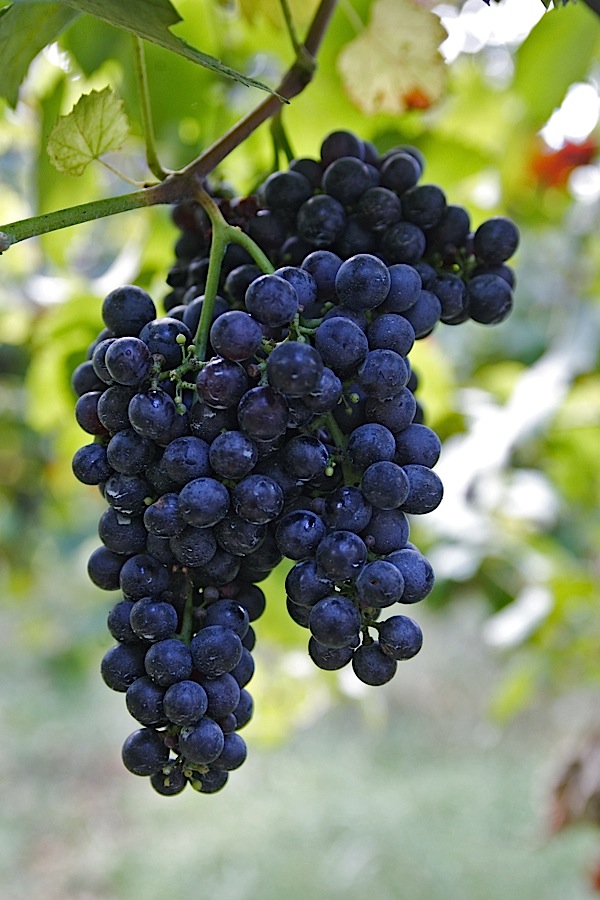
But there I was on a hot summer’s day in
Parma, so the thought of a chilled, low-alcohol
local wine with my lunch of the region’s more
admirable products—Prosciutto di Parma and
Parmigiano-Reggiano—seemed appealing enough. I
ordered a bottle of Otello Nero di Lambrusco, with
11.5 percent alcohol. It didn’t make a fizzy sound
as it was poured but it did have a slight
effervescence—what the poet Keats called “beaded
bubbles winking at the brim”--and a rich, deep
purple color.
I inhaled the full-fruited bouquet and
sipped: it was brisk, only slightly sweet, and,
served chilled, immensely refreshing.
Right
then,
I made a vow to order only lambruscos for the rest
of my week in Emilia-Romagna,
the region reputed to have the best, and richest,
food in Italy, beginning with its famous green lasagne
alla bolognese, tortellini pasta, balsamic
vinegar, and mortadella salume. In fact,
it’s often said the fizzy lambrusco helps cut the
fat in Emilia-Romagna’s food, a virtue you would
certainly not claim for a heady red wine like
Piedmont’s barolos or Tuscany’s brunello di
montalcinos.
My regimen became revelatory. Bottle after
bottle I was delighted, often impressed, by the
quality and variety of lambruscos, which can range
from a true rose color to a dark magenta. None rose
above 11.5 percent alcohol, most were less, which
meant I could easily drink my usual half bottle at
dinner and not rise from the table swooning.
Lambrusco
is a wine with four Denominazione di origine
controllata (DOC) appellations in Emilia-Romagna (below).
While some are classified as rosatos and
others as rossos, they are all to one degree
or another a little effervescent (“frizzante”
in Italian), and may be made secco (dry), amabile
(semi-sweet) or dolce (sweet), from a variety of
lambrusco grapes.
The sorbara variety, grown mainly in the
north, produces the most refined examples, as I was
to find in my explorations of lambrusco. The
grasparossa variety (above) produces fuller
bodied wines. I particularly liked the fairly foamy,
very dark and pleasingly dry grasparossa from La
Battagliola winery.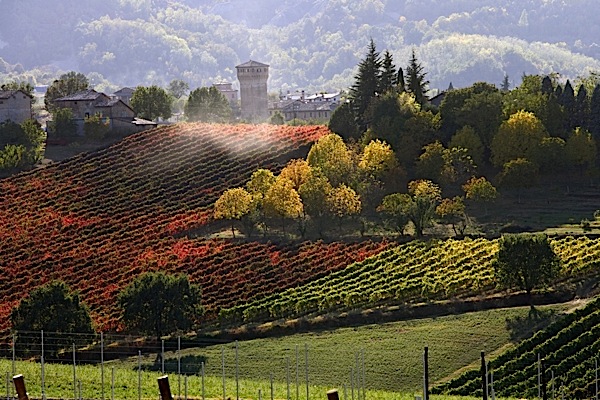
In Bologna, where a new, 32-year-old chef
named Riccardo Facchini has restored the reputation
of the old ristorante Pappagallo,
I drank a 100 percent sorbara-based lambrusco from
Leclisse Paltrinieri (below), a
medium-bodied, rosy wine that went perfectly with
both a light pasta with mantis shrimp and mussels
and a glorious, five-layer lasagne alla
bolognese rich with meat ragù
and besciamella cream.
At Biassanot
in Bologna, a trattoria whose name is local dialect
for “night owls,” I ordered gnocchi with Gorgonzola
and beef with porcini mushrooms, so I chose
a big lambrusco, made from the maestri varietal,
Ariola's Marcello, which in 2011 was selected as the
best sparkling wine in the world at the
International Wine Challenge in London, and won a
Gold Medal at the prestigious Vinitaly Exhibition in
Verona.
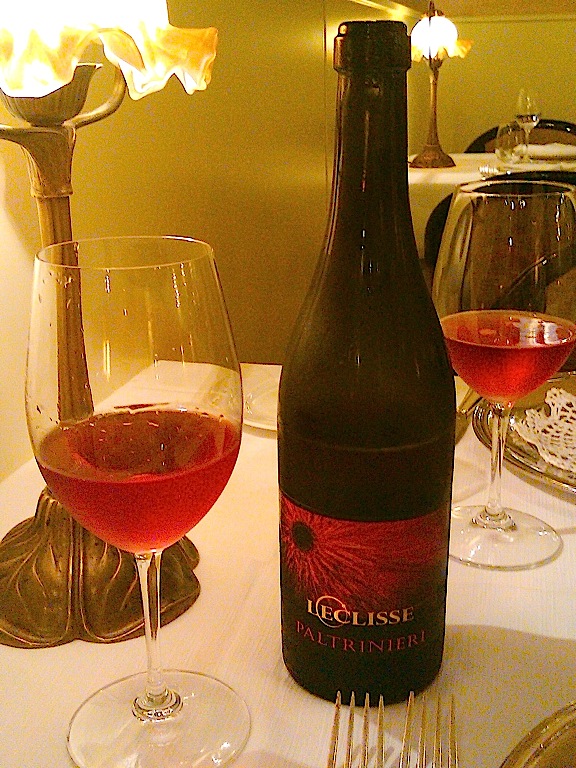 Where did the
week go? Lunch at quarter-century old Trattoria Anna
Maria, run by chef Anna Maria Monari, was a plate of
the lightest egg tagliatelle I’ve ever had,
enjoyed with Lambrusco Terre Verdiane, whose label
likes to tout the wine’s vivacity to the music of
Giuseppe Verdi—“sparkling, vivacious, perfumed and
full of color like our region. . . a song
among friends . . . emotional force. . .,” and so on
(my translation).
Where did the
week go? Lunch at quarter-century old Trattoria Anna
Maria, run by chef Anna Maria Monari, was a plate of
the lightest egg tagliatelle I’ve ever had,
enjoyed with Lambrusco Terre Verdiane, whose label
likes to tout the wine’s vivacity to the music of
Giuseppe Verdi—“sparkling, vivacious, perfumed and
full of color like our region. . . a song
among friends . . . emotional force. . .,” and so on
(my translation).
My
last
bottle of lambrusco in Bologna was Sant’Agata,
another from the Paltrinieri estate, a superb
example of the finesse found in the sorbara grape,
here macerated for two days before fermentation to
give it body. I’m pretty sure I drank the whole
bottle, with enormous pleasure, over a sumptuous
dinner at I Carracci, the splendidly posh restaurant
at the Majestic
Baglioni Hotel. With some culatello
ham, a lasagne with Parmigiano fondue, and veal
scalloping with sauteed spinach, somehow the two
hours sped by, before dessert, of course.
As a big believer that you should always
drink the local wine and eat the local food anywhere
that wine is made, I couldn’t have been happier to
find such pleasure in a wine I had for so long
neglected out of hand. Now, with most of the better
labels selling outside of Italy for less than $16 a
bottle, it’s hard to imagine summer going by without
it.
❖❖❖
 TEN
REASONS WRITERS
TEN
REASONS WRITERS
NEED EDITORS
(Selections
from the dining guide of San Francisco Magazine,
July 2012).
Frances
“Kale, which cameos in ricotta, moves on to star in
its own salad.”
Bar
Jules
“Ling cod lay naked and confident with English peas
and baby carrots.”
Rose
Pistola
“The pepperoni pizza was [perfect], too, but this
town is filthy with solid thin-crust pies.”
Umami
Burger
“The burgers here, ground hourly, arrive as juicy as
celebrity gossip.
Their wardrobes are elaborate.”
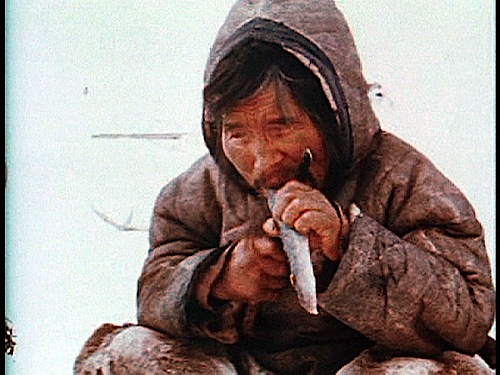
Wayfare Tavern
“A salad of black-eyed peas and feta was built
around tomatoes so mealy
that an Inuit in winter would have sent them back.”
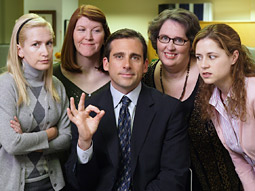
One Market
“The menu balances conservative conventioneer
favorites with
Cal-Med flashes that aren’t so fanciful that the
boys back
at the office would call them fey.”

Leopold’s
“The first thing you notice when you walk into
Leopold’s is the welcome.
Instead of a skinny, bitchy twentysomething, you’re
greeted by a sweet
lumberjack of a man.”
 Ame
Ame
“A meal here is as smooth and uneventful
as a ride in a Lexus set on cruise control.”
Beast and the Hare
“A beautifully fried chicken and braised greens [is]
enriched with enough pork fat to prompt a bump in
local Lipitor prescriptions.”
Coi
“The snug, subdued dining room feels like a place
where everyone’s eavesdropping. But
mostly what you overhear is “My God, did you taste
that?”
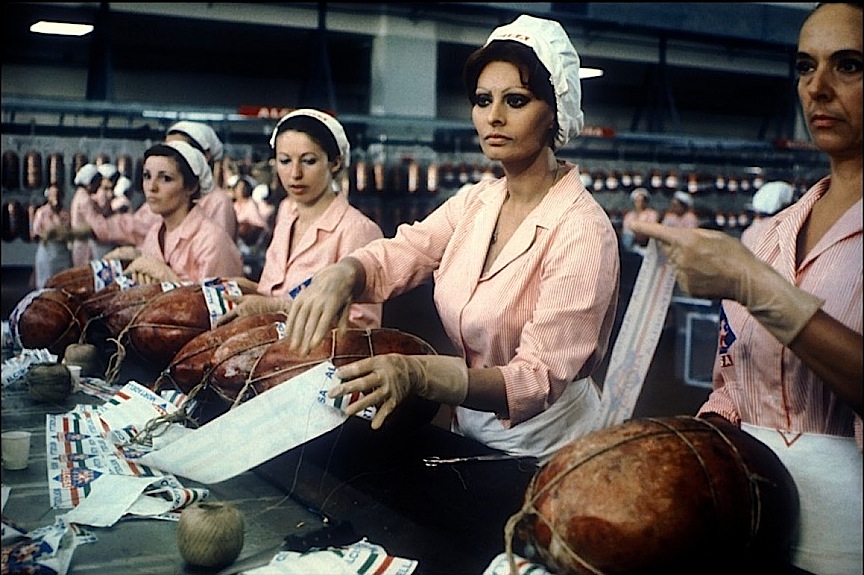 POLITICAL
CORRECTNESS
POLITICAL
CORRECTNESS
GONE WILD, NO. 2,445
Matthew
Mittenthal, a spokesman for the NYC Department of
Education, told media the new list of topics that
"could evoke unpleasant emotions in the students" on
standardized tests include pepperoni,
because "persons of some religions or cultures
may not indulge in."
❖❖❖
Any of John
Mariani's books below may be ordered from amazon.com.
 |
My latest book, which just won the prize for best book from International Gourmand, written with Jim Heimann and Steven Heller, Menu Design in America, 1850-1985 (Taschen Books), has just appeared, with nearly 1,000 beautiful, historic, hilarious, sometimes shocking menus dating back to before the Civil War and going through the Gilded Age, the Jazz Age, the Depression, the nightclub era of the 1930s and 1940s, the Space Age era, and the age when menus were a form of advertising in innovative explosions of color and modern design. The book is a chronicle of changing tastes and mores and says as much about America as about its food and drink.
“Luxuriating vicariously in the pleasures of this book. . . you can’t help but become hungry. . .for the food of course, but also for something more: the bygone days of our country’s splendidly rich and complex past. Epicureans of both good food and artful design will do well to make it their coffee table’s main course.”—Chip Kidd, Wall Street Journal.
“[The menus] reflect the amazing craftsmanship that many restaurants applied to their bills of fare, and suggest that today’s restaurateurs could learn a lot from their predecessors.”—Rebecca Marx, The Village Voice. |
"Eating Italian will never be the same after reading John Mariani's entertaining and savory gastronomical history of the cuisine of Italy and how it won over appetites worldwide. . . . This book is such a tasteful narrative that it will literally make you hungry for Italian food and arouse your appetite for gastronomical history."--Don Oldenburg, USA Today. "Italian
restaurants--some good, some glitzy--far
outnumber their French rivals. Many
of these establishments are zestfully
described in How Italian Food Conquered
the World, an entertaining and fact-filled
chronicle by food-and-wine correspondent
John F. Mariani."--Aram Bakshian Jr., Wall
Street Journal.
"Equal parts history,
sociology, gastronomy, and just plain fun,
How Italian Food Conquered the World tells
the captivating and delicious story of the
(let's face it) everybody's favorite cuisine
with clarity, verve and more than one
surprise."--Colman Andrews, editorial
director of The Daily Meal.com. "A fantastic and fascinating
read, covering everything from the influence
of Venice's spice trade to the impact of
Italian immigrants in America and the
evolution of alta cucina. This book will serve
as a terrific resource to anyone interested in
the real story of Italian food."--Mary Ann
Esposito, host of PBS-TV's Ciao Italia. "John Mariani has written the
definitive history of how Italians won their
way into our hearts, minds, and
stomachs. It's a story of pleasure
over pomp and taste over technique."--Danny
Meyer, owner of NYC restaurants Union Square
Cafe, Gotham Bar & Grill, The Modern,
and Maialino.
|
 |
 |
 |
 |
 |
 |
 |
 |
❖❖❖
 Everett Potter's
Travel Report:
Everett Potter's
Travel Report: 
 Eating Las Vegas
is the new on-line site for Virtual Gourmet
contributor John A. Curtas., who since 1995
has been commenting on the Las Vegas food
scene and reviewing restaurants for Nevada
Public Radio. He is also the restaurant
critic for KLAS TV, Channel 8 in Las Vegas,
and his past reviews can be accessed at KNPR.org.
Click on the logo below to go directly to his
site.
Eating Las Vegas
is the new on-line site for Virtual Gourmet
contributor John A. Curtas., who since 1995
has been commenting on the Las Vegas food
scene and reviewing restaurants for Nevada
Public Radio. He is also the restaurant
critic for KLAS TV, Channel 8 in Las Vegas,
and his past reviews can be accessed at KNPR.org.
Click on the logo below to go directly to his
site.

Tennis Resorts Online: A Critical Guide to the World's Best Tennis Resorts and Tennis Camps, published by ROGER COX, who has spent more than two decades writing about tennis travel, including a 17-year stretch for Tennis magazine. He has also written for Arthur Frommer's Budget Travel, New York Magazine, Travel & Leisure, Esquire, Money, USTA Magazine, Men's Journal, and The Robb Report. He has authored two books-The World's Best Tennis Vacations (Stephen Greene Press/Viking Penguin, 1990) and The Best Places to Stay in the Rockies (Houghton Mifflin, 1992 & 1994), and the Melbourne (Australia) chapter to the Wall Street Journal Business Guide to Cities of the Pacific Rim (Fodor's Travel Guides, 1991).


MARIANI'S VIRTUAL GOURMET
NEWSLETTER is published weekly.
Editor/Publisher:
John Mariani. Contributing Writers: Christopher Mariani,
Robert Mariani, John A.
Curtas, Edward Brivio, Mort Hochstein, Suzanne
Wright, and Brian Freedman. Contributing
Photographers: Galina Stepanoff-Dargery,
Bobby Pirillo. Technical Advisor: Gerry
McLoughlin.
© copyright John Mariani 2012
